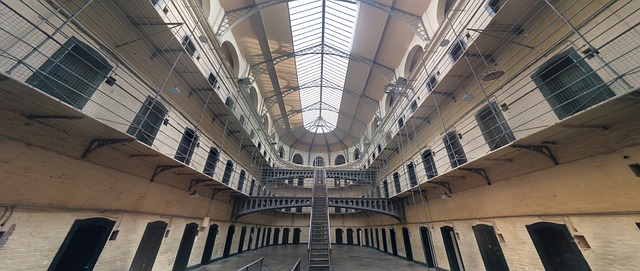DUI (driving under the influence) laws vary significantly between rural and urban settings due to geographical factors and transportation options. Rural areas, with lower population densities and limited public transit, have more lenient regulations focusing on accident prevention and community-based solutions like designated drivers. Urban regions, with higher traffic volumes and comprehensive public transit networks, enforce stricter laws and penalties, including lower blood alcohol limits and educational programs, due to higher accident risks and congestion. Both settings innovate to address DUI: rural communities promote ride-sharing services and local awareness campaigns, while urban areas leverage high-visibility patrols, breathalyzer tests, social media campaigns, and efficient alternative transportation options like public transit and ride-hailing apps to reduce impaired driving incidents.
In the diverse landscape of drunk driving regulations, rural and urban areas exhibit stark contrasts. This article delves into the intricate web of DUI laws, exploring how population density significantly influences penalties. We dissect alternative transportation options in rural settings, where challenges necessitate innovative solutions, contrasting with urban networks that offer efficient choices for impaired drivers. Through case studies, we paint a comprehensive picture of rural vs urban DUI enforcement strategies.
- Understanding DUI Laws: Key Differences Between Rural and Urban Areas
- Impact of Population Density on DUI Penalties
- Alternative Transportation in Rural Settings: Challenges and Solutions
- Urban Transportation Networks: Efficient Options for Impaired Drivers
- Case Studies: Comparing Rural and Urban DUI Enforcement Strategies
Understanding DUI Laws: Key Differences Between Rural and Urban Areas

In understanding DUI (Driving Under the Influence) laws, it’s crucial to recognize that key differences exist between rural and urban areas. Rural communities often have less stringent regulations compared to their urban counterparts. This disparity can be attributed to various factors, including population density and the availability of alternative transportation options. In remote areas with lower populations, law enforcement may focus more on preventing major accidents than on punishing every minor infraction related to alcohol consumption while driving.
On the other hand, urban areas typically have more stringent DUI laws due to higher traffic volumes and dense populations. Here, authorities often implement stricter penalties and breathalyzer tests as part of their efforts to deter drunk driving. Additionally, urban centers usually offer a wider array of alternative transportation options, such as ride-sharing services, taxis, and public transit, which can further influence the way DUI laws are enforced and perceived.
Impact of Population Density on DUI Penalties

In densely populated urban areas, where alternative transportation options are abundant—from public transit to ride-sharing services and bike lanes—the impact of DUI (driving under the influence) laws is felt differently compared to rural regions with sparse populations and limited public infrastructure. Urban jurisdictions often have stricter penalties for DUI offenses due to the higher risk of accidents and congestion in crowded spaces. These areas typically enforce stricter blood alcohol limits, harsher license suspensions, and more extensive education programs to deter drinking and driving.
On the other hand, rural communities face unique challenges when it comes to DUI enforcement. Limited public transportation makes alternative rides less accessible, leading to increased reliance on personal vehicles. As a result, rural DUI laws may focus more on community-based solutions, such as encouraging designated drivers or promoting local awareness campaigns. These strategies aim to address the specific needs and constraints of rural areas while still maintaining road safety standards.
Alternative Transportation in Rural Settings: Challenges and Solutions

In rural settings, where public transportation is often scarce, individuals facing DUI charges may have limited options for alternative transportation. This presents a unique challenge compared to urban areas where ride-sharing services and public transit are more readily available. The lack of infrastructure in rural regions can make it difficult for individuals to find safe and reliable alternatives to driving under the influence.
However, communities are stepping up to address this issue by implementing various solutions. Local initiatives include promoting designated driver programs, encouraging the use of taxi services or community-based ride-sharing networks, and even fostering partnerships with local businesses to provide discounted or free transportation options for those in need. These alternative transportation options not only help deter DUI incidents but also ensure that rural residents have access to safe and responsible mobility solutions.
Urban Transportation Networks: Efficient Options for Impaired Drivers

In urban areas, transportation networks are typically well-developed and offer a variety of efficient alternative options for individuals who have been drinking alcohol. These include reliable public transit systems such as buses, subways, and trams, which provide safe and convenient ways to travel without the need for personal vehicles. Additionally, ride-sharing services like Uber and Lyft are readily available, allowing impaired drivers to seek assistance from professional drivers who can safely transport them to their destinations.
The abundance of alternative transportation options in urban settings significantly reduces the risk of impaired driving. Impaired individuals can opt for these alternatives, ensuring they reach their locations without endangering themselves or others on the road. This accessibility promotes safety and discourages drunk or impaired driving, leading to stricter DUI laws tailored to urban environments that emphasize these readily available alternative transportation options.
Case Studies: Comparing Rural and Urban DUI Enforcement Strategies

In rural areas, where populations are spread out and driving distances are often longer, law enforcement agencies have adopted unique strategies to combat DUI (driving under the influence). One notable approach is the increased focus on alternative transportation options, such as ride-sharing services or designated drivers. For instance, a case study in a small Midwestern town revealed that by partnering with local taxi companies and promoting mobile apps for ride-hiring, police successfully reduced DUI-related incidents during peak drinking hours. This strategy not only discourages drunk driving but also provides a safety net for rural residents who may live far from public transportation hubs.
In contrast, urban centers face distinct challenges in DUI enforcement due to high population densities and congestion. Here, law enforcement employs tactics like increased visibility and mobile patrols to deter drinking and driving. For example, a major city’s police department implemented specialized units equipped with breathalyzer tests and rapid response teams, resulting in a notable drop in arrest rates during weekends when bar areas are particularly busy. These urban strategies also include robust public awareness campaigns that highlight the severe penalties for DUI offenses, often leveraging social media and community events to reach a wide audience, encouraging responsible drinking habits.
In conclusion, the disparities between rural and urban DUI laws highlight the unique challenges each environment presents. While urban areas benefit from robust public transportation networks, rural regions struggle with limited alternative options. This gap influences penalty structures and enforcement strategies. By exploring innovative solutions like designated driver programs and enhanced public transit in rural settings, and leveraging existing urban infrastructure, jurisdictions can effectively combat drunk driving across diverse landscapes. Promoting awareness and accessible alternatives remains key to reducing impaired driving incidents and ensuring safety for all road users.






